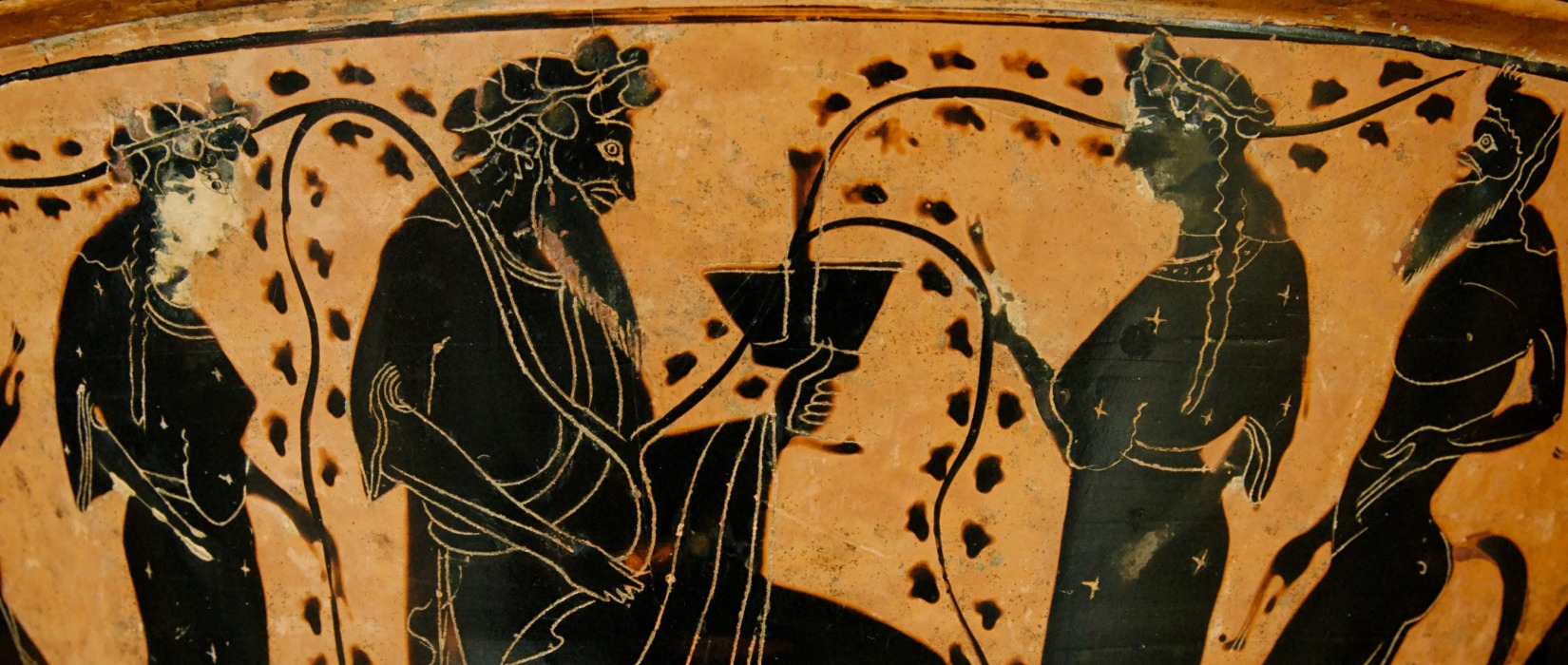The Διονύσια κατ᾽ ἀγρούς, or μικρά, the rural or lesser Dionysia, a vintage festival, was celebrated in the various demes of Attica in the month of Poseideon. It was celebrated with a large procession in which men carried a phallus and cakes. Revelers and singers were also a part of the procession. A representation of the God was included to represent His coming. The festival also included stage comedies and the playing of lighthearted games. Generally, it was a joyful festival, shared by all, even the slaves. Will you join us for it tomorrow at 10 am EST?
The Dionysia was originally a rural festival in Eleutherae, Attica, probably celebrating the cultivation of vines. It was probably a very ancient festival, perhaps not originally associated with Dionysus. This 'rural Dionysia' was held during the winter, in the month of Poseideon. The central event was the pompe (πομπή), the procession, in which phalloi (φαλλοί) were carried by phallophoroi (φαλλοφόροι). Also participating in the pompe were kanephoroi (κανηφόροι – young girls carrying baskets), obeliaphoroi (ὀβελιαφόροι – who carried long loaves of bread), skaphephoroi (σκαφηφόροι – who carried other offerings), hydriaphoroi (ὑδριαφόροι – who carried jars of water), and askophoroi (ἀσκοφόροι – who carried jars of wine).
After the pompe procession was completed, there were contests of dancing and singing, and choruses (led by a choregos) would perform dithyrambs. Some festivals may have included dramatic performances, possibly of the tragedies and comedies that had been produced at the City Dionysia the previous year. This was more common in the larger towns, such as Piraeus and Eleusis.
Because the various towns in Attica held their festivals on different days, it was possible for spectators to visit more than one festival per season. It was also an opportunity for Athenian citizens to travel outside the city if they did not have the opportunity to do so during the rest of the year. This also allowed travelling companies of actors to perform in more than one town during the period of the festival.
The community for the event can be found here and the ritual here.
The Dionysia was originally a rural festival in Eleutherae, Attica, probably celebrating the cultivation of vines. It was probably a very ancient festival, perhaps not originally associated with Dionysus. This 'rural Dionysia' was held during the winter, in the month of Poseideon. The central event was the pompe (πομπή), the procession, in which phalloi (φαλλοί) were carried by phallophoroi (φαλλοφόροι). Also participating in the pompe were kanephoroi (κανηφόροι – young girls carrying baskets), obeliaphoroi (ὀβελιαφόροι – who carried long loaves of bread), skaphephoroi (σκαφηφόροι – who carried other offerings), hydriaphoroi (ὑδριαφόροι – who carried jars of water), and askophoroi (ἀσκοφόροι – who carried jars of wine).
After the pompe procession was completed, there were contests of dancing and singing, and choruses (led by a choregos) would perform dithyrambs. Some festivals may have included dramatic performances, possibly of the tragedies and comedies that had been produced at the City Dionysia the previous year. This was more common in the larger towns, such as Piraeus and Eleusis.
Because the various towns in Attica held their festivals on different days, it was possible for spectators to visit more than one festival per season. It was also an opportunity for Athenian citizens to travel outside the city if they did not have the opportunity to do so during the rest of the year. This also allowed travelling companies of actors to perform in more than one town during the period of the festival.
The community for the event can be found here and the ritual here.

 Khaire! Would you buy me a coffee?
Khaire! Would you buy me a coffee?
No comments:
Post a Comment